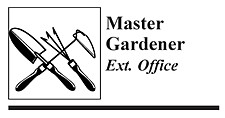August 31, 2006 at 7:12 a.m.
I recently wrote an article on pests in the raspberry patch. The last part of that article included yellow jackets, which have become more than pests. Since that article, several gardeners have contacted me about problems they have encountered with them. I felt it was a serious problem so I have included an article by Jeffrey Hahn, Assistant Extension Entomologist.
We are finding above average populations of yellow jackets this year. This is because of the warm, dry weather we experienced this spring. This allowed over-wintering queens to become active more quickly and begin constructing nests and producing workers sooner than normal. So, their nests are becoming large enough and the workers abundant enough that their presence is conspicuous in many cases.
Yellow jackets construct a paper mache type nest made from chewed up wood. They make paper-like combs comprised of many cells. These combs can be arranged on top of each other in a series of tiers. The combs are covered by a papery envelope. Nests are small at the beginning, about the size of a softball but can get to be the size of a basketball or larger.
They can be found in exposed areas such as hanging under eaves or on the limb of a tree or shrub. They can also be found underground in old rodent burrows. They also can be found in cavities of buildings or in the spaces in cinder blocks.
It is best to treat a yellow jacket nest as soon as you notice it, as it will continue to grow in size until late summer. Treatment of the nest depends on where it is located. If it is high in a tree or in a site where there is no risk of stings, leave it alone. The freezing temperatures will eventually kill them.
If the nest is located where there is human activity, you should control it to prevent stings. When the nest is out in the open, you can generally take care of it yourself. There are many wasp and hornet spray products you can use. They typically contain active ingredients such as resmethrin, tetramethrin, permethrin, or prallethrin.
Your best bet is to wait until evening to spray the nest. Yellow jackets are not very active when it is dark. Spray the insecticide directly into the nest entrance, the opening located on the bottom. Check it the next day to see if you were successful. If there still is activity, treat it again. If you prefer, you can always hire a professional pest control service.
If the nest is underground, it is more challenging but it can still be handled by the home owner. Treat it at night and instead of using an aerosol can of wasp spray, you are going to want to use an insecticide that is labeled for insects in grass. This would include Ortho Bug-B-Gone, MAX Insect Killer (active ingredient bifenthrin). Dusts work better than liquids but it is harder to find dusts that are labeled for treating underground yellow jacket nests. Once you are sure the yellow jackets are all dead, fill in the burrow with dirt.
The most challenging type of control is the ones that are located within structures such as wall voids or attics. You see the yellow jackets moving back and forth through the cracks or space but you don' t know exactly where the nest is located. The best method is to apply a dust into the cavity.
Because this type of nest is so difficult to eradicate, it is usually best to contact a pest control service. There are a couple of things to be careful of when it comes to hidden nests. Don' t spray an aerosol insecticide into the opening in hopes of eliminating the nest. The odds are you won' t kill many and it could force them to enter the home. Also, don't seal the opening unless you are sure all the bees are dead. This may force them to find another way into the building.
IN YOUR YARD AND GARDEN: Water your trees now because they need it now most of all. Trees are starting the slow shutdown process for winter so an inch of water per week is critical. Water stress interferes with hardening-off for winter and results in winter injury. We saw a lot of that this year!
Read all about watering at: http://fr.cfans.umn.edu/extension/Home/WateringTrees.pdf
Renew mulch around woody plants. It should be two to four inches deep around woody plants and at least several feet out from the trunks of trees. The ideal is to mulch to the dripline. For young trees, the mulched area should be a minimum of three to four feet in diameter. Be sure keep 2 inches of clearance between mulch and stem. Do not pile mulch up the trunk of trees-aka "volcano mulch"; it will kill the trees.
PLANT CLINICS: There will be no plant clinic Monday, Sept. 4. Beginning Sept. 12, volunteer Master Gardeners will be available Tuesdays, from 6-8 p.m., at the Senior Center, located at 6th and Maple in North Branch, in conjunction with our fall class series.
They are also at the Lindstrom Farmers' Market Saturdays from 8 a.m.-noon in the parking lot of St. Bridget’s Church, at 13060 Lake Blvd., to answer your gardening questions.
VOICE MAIL: You can leave a question for a volunteer Master Gardener at 651-674-4417. Depending on the volume of calls, they try to respond within a couple of days. During office hours ask for the Master Gardener voicemail, after hours, select ext. 18. You can also get your question answered on the web at: www.extension.umn. edu/askmg.




Comments:
Commenting has been disabled for this item.